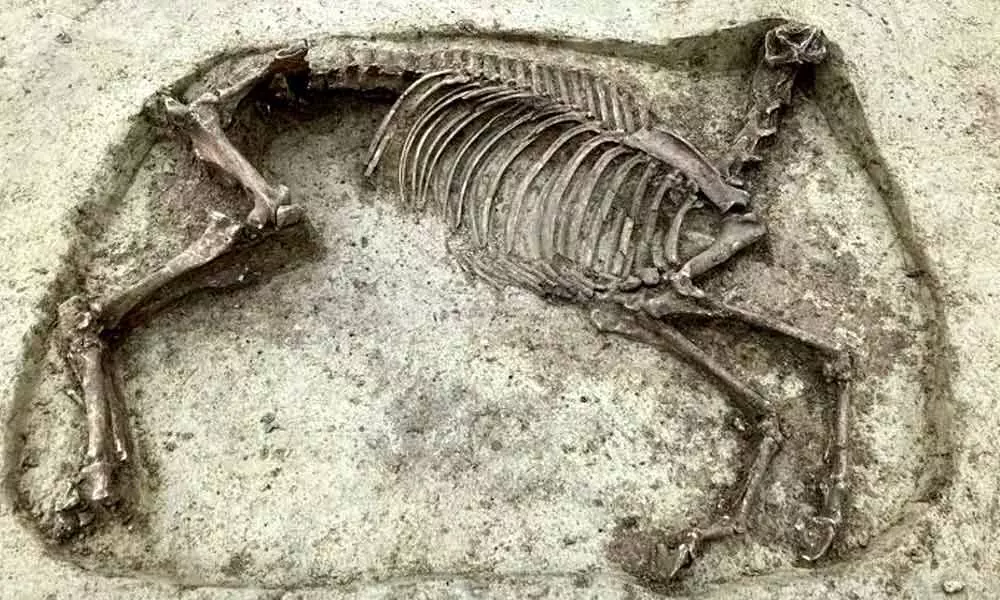Headless Horse Along With A Skeleton Of A Man Was Discovered In Southern Germany

The decapitated horse. (State Office for the Preservation of Monuments in the Regional Council of Stuttgart/ F. Damminger)
- The skeleton remains of a man buried 1,400 years ago near a headless horse have been uncovered.
- The individual was buried during the reign of the Merovingian dynasty (476–750 CE), which ruled over a vast expanse of land in what is now France and Central Europe.
At a historic cemetery in Knittlingen, southern Germany, the skeleton remains of a man buried 1,400 years ago near a headless horse have been uncovered. When he was alive, he was most certainly the horse's owner and rider.
The individual was buried during the reign of the Merovingian dynasty (476–750 CE), which ruled over a vast expanse of land in what is now France and Central Europe. The individual most certainly assisted the dynasty's rulers throughout his lifetime. Folke Damminger, an archaeologist with responsibility of research at the site, said that he placed in a 'chain of command' with the Merovingian monarchs on top, which indicated he was obligated to engage in the king's expeditions.
According to Damminger, being a member of the local nobility, he was most likely the head of an agricultural household that included his family and servants. Yet, the individual was never a farmer in the literal sense, because other labourers may have done much of the actual farming.
It's unclear why he was buried with a headless horse, but Damminger said that the decapitation was most likely part of the funeral ceremony. Damminger indicated that the horse was placed alongside its master as a 'grave good' for the afterlife instead of a sacrifice. The horse's head has yet to be discovered. His relatives would have wanted to present him as a wealthy and powerful figure so that they might benefit from his position. The'staging' of the departed in his previous status and wealth as a representation of his successors to preserve this position which was one of the functions of this ceremony.
Inside the same cemetery, archaeologists unearthed the remains of numerous additional persons who lived about the same period as this rider. Some were interred with valuable grave items, such as a widow who was buried with a gold brooch. Weapons such as swords, lances, shields, and arrowheads were buried with many of the soldiers.
The archaeologists will proceed to look into the headless horse burial and other graves in the cemetery. The team is unearthing and preserving the enigmatic man's grave goods, according to Damminger, and future anthropological work on the man's bones and teeth will be conducted to understand regarding his health, why he died, and how old he was when he passes away. Meanwhile, archeologists are carrying out most of the excavations.

















